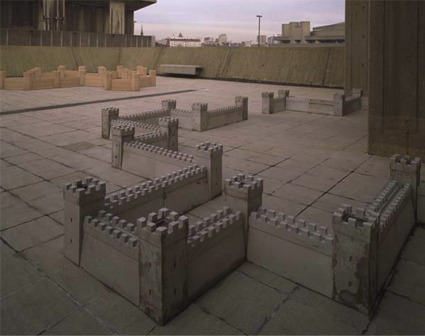Julian Opie is running on empty. But, says Andrew Graham-Dixon, that's not necessarily a bad thing
The experience is familiar. You are driving along the motorway. You have been driving for hours but it might have been only minutes because everything seems the same as it did when you started. The view changes, but only at the periphery of your vision, since your attention is focused on the road that stretches before you. The unchanging tarmac strip, marked by evenly spaced white lines, narrows as it recedes towards the horizon. It has taken on hypnotic, transfixing qualities. Once you reach the horizon, you know what you will see. You will see another road aiming you at another horizon under another sky. But still you drive on.
Driving, now, has ceased to be about getting anywhere. The point of driving has become, simply, to drive. Things begin to feel faintly unreal. The experience is both pleasant and unpleasant. You enjoy the sense of temporary suspension from the real world, the distinctive unreality of motorway driving that makes it feel like playing a game: it is almost as if the windscreen were a video screen and the landscape through which you move just a digitalised illusion. And you guiltily regret the addiction to such a bland and impersonal experience. Still you keep driving, keep deferring the moment when you have to stop the car and the world turns real once again.
Imagine you are driving, advises the collective title of Julian Opie's new paintings. Hung at the start of his Hayward Gallery retrospective, they amount to a statement of the artist's driving concerns. Their style is nothing much to write home about. Opie's technique is self-consciously flat and dumb, modelled on the impersonal, homogenised quality of computer game graphics, and just to...


